|
The world of dog breeds and kennel clubs can be confusing and contradictory. This is even more true when you dip your toes into international waters. Take a look at the Akita. One breed in the United States and Canada whereas the rest of the world has the larger American Akita and traditional Akita Inu. Breeds like the Brittany have never split, but there is a distinction between the North American Brittany (no longer called a spaniel) and France’s Epagneul Briton.
Names alone can cause confusion, even without a language barrier. English Toy Spaniels are King Charles Spaniels in England where the smaller variety of the Manchester Terrier is known as the English Toy Terrier. And don't get me started on Russell terriers - Jack, Parson, or neither! Perhaps one of the most confusing breed (or breeds) is the German Spitz. One dog with five sizes under the Fédération Cynologique Internationale (FCI) and several breeds everywhere else. To attempt simplicity, let's examine the FCI standard first, before trying to explain where everyone else fits in. The German Spitz is a classic northern breed, spitzen, or arctic, if you prefer. Reminiscent of dogs like the Lapphunds and Samoyed, they are believed to be amongst the oldest European breeds. Just how old the German Spitz is remains unknown, but it has been present in the region since at least the 1400s and may have arrived via the Vikings.
0 Comments
There are many mysteries in the world of dogs. From the entire species beginnings to the development of each breed. The origins of few dogs are known with exact certainty. Others can be pieced together by ancient writings or archaeological finds. And some are wrapped in the mists of legends. One of the more fascinating locations for dog history lies in the Mediterranean. Two of the oldest groupings developed there. However, no one knows where their ancestors came from. These dogs are the small bichons and the primitive Mediterranean sighthounds. Neither is related, but both trace their roots throughout the islands in the region. I have been updating the site and after researching both groups I thought I would compile my findings here. None of this information can be stated as fact, but it is the closest I have been able to come to a logical answer. Due to length I have split them into two posts, with today’s covering the bichons. The sighthounds will be covered next week. The bichon family includes seven modern breeds of dogs that are recognized, the Bichon Frisé, Bolognese, Coton de Tuléar, Havanese, Löwchen, Maltese, and Russian Tsvetnaya Bolonka. There is disagreement in some additions to this grouping, mainly the Löwchen and the Russian Tsvetnaya Bolonka. Some experts believe the Löwchen is not part of the bichon family and many others (including most kennel clubs) do not yet recognize the Russian Tsvetnaya Bolonka as a breed. Since several of these breeds are not well known, let’s introduce each of them before further diving into their history as a whole.
As we begin this winding journey, it is important to remember that until a few hundred years ago none of the bichons were a breed as we know today. Historically few dogs have been isolated enough to breed true without direct human intervention. Geographically, the Mediterranean has been a trade route for thousands of years. Ancient civilizations have risen and fallen in this region. While in later centuries European explorers would traverse the islands. Therefore, it is probable most, if not all, of the bichons interbred throughout their early beginnings. |
AuthorLisa Quibell Archives
March 2019
Categories
All
|
- Home
- Worldly Dogs Blog
-
Breeds Geographically
- Africa >
-
Asia
>
- Australia >
-
Europe
>
- Austria >
- Belgium >
- Bosnia and Herzegovina >
- Croatia >
- Czech Republic >
- Denmark >
-
England
>
- Airedale Terrier
- Basset Hound
- Beagle
- Bedlington Terrier
- Border Collie
- Border Terrier
- Bull Terrier
- Bulldog
- Bullmastiff
- Cavalier King Charles Spaniel
- Clumber Spaniel
- Curly Coated Retriever
- English Cocker Spaniel
- English Foxhound
- English Setter
- English Springer Spaniel
- English Toy Spaniel
- Field Spaniel
- Flat Coated Retriever
- Greyhound
- Harrier
- Jack Russell Terrier
- Lakeland Terrier
- Lancashire Heeler
- Manchester Terrier
- Mastiff
- Miniature Bull Terrier
- Norfolk Terrier
- Norwich Terrier
- Old English Sheepdog
- Otterhound
- Parson Russell Terrier
- Patterdale Terrier
- Pointer
- Smooth Fox Terrier
- Sporting Lucas Terrier
- Staffordshire Bull Terrier
- Sussex Spaniel
- Whippet
- Wire Fox Terrier
- Yorkshire Terrier
- Finland >
-
France
>
- Anglo-Français de Petite Vénerie
- Ariégeois
- Barbet
- Basset Artésien Normand
- Basset Bleu de Gascogne
- Basset Fauve de Bretagne
- Beagle Harrier
- Beauceron
- Berger Picard
- Bichon Frisé
- Billy
- Blue Picardy Spaniel
- Braque d'Auvergne
- Braque de l'Ariége
- Braque Du Bourbonnais
- Braque Français
- Braque Saint-Germain
- Briard
- Briquet Griffon Vendéen
- Brittany
- Chien d'Artois
- Chien Français Blanc et Noir
- Chien Français Blanc et Orange
- Chien Français Tricolore
- Dogue de Bordeaux
- French Bulldog
- French Spaniel
- Grand Anglo-Français Blanc et Noir
- Grand Anglo-Français Blanc et Orange
- Grand Anglo-Français Tricolore
- Grand Basset Griffon Vendéen
- Grand Bleu de Gascogne
- Grand Gascon-Saintongeois
- Grand Griffon Vendéen
- Great Pyrenees
- Griffon Bleu de Gascogne
- Griffon Fauve de Bretagne
- Griffon Nivernais
- Löwchen
- Petit Basset Griffon Vendéen
- Petit Bleu de Gascogne
- Petit Gascon-Saintongeois
- Picardy Spaniel
- Poitevin
- Pont-Audemer Spaniel
- Porcelaine
- Pyrenean Shepherd
- Wirehaired Pointing Griffon
-
Germany
>
- Affenpinscher
- Bavarian Mountain Hound
- Biewer Terrier
- Boxer
- Dachshund
- Deutsche Bracke
- Deutscher Wachtelhund
- Doberman Pinscher
- Eurasier
- German Longhaired Pointer
- German Pinscher
- German Rough Haired Pointer
- German Shepherd Dog
- German Shorthaired Pointer
- German Spitz
- German Wirehaired Pointer
- Giant Schnauzer
- Great Dane
- Hanoverian Hound
- Hovawart
- Jagdterrier
- Kromfohrländer
- Large Münsterländer
- Leonberger
- Miniature Pinscher
- Miniature Schnauzer
- Pomeranian
- Poodle
- Pudelpointer
- Rottweiler
- Schnauzer
- Small Münsterländer
- Weimaraner
- Westphalian Dachsbracke
- White Shepherd Dog
- Greece >
- Hungary >
- Ireland >
- Italy >
- Malta >
- Netherlands >
- Norway >
- Poland >
- Portugal >
- Romania >
- Russia >
- Scotland >
- Serbia >
- Slovakia >
- Spain >
- Sweden >
- Switzerland >
- Turkey >
- Wales >
- Other European Breeds >
-
North America
>
- Canada >
- Mexico >
-
United States
>
- Alaskan Klee Kai
- Alaskan Malamute
- American Bulldog
- American Bully
- American Cocker Spaniel
- American Eskimo Dog
- American Foxhound
- American Hairless Terrier
- American Leopard Hound
- American Pit Bull Terrier
- American Staffordshire Terrier
- American Water Spaniel
- Australian Shepherd
- Black and Tan Coonhound
- Black Mouth Cur
- Bluetick Coonhound
- Boston Terrier
- Boykin Spaniel
- Carolina Dog
- Catahoula Leopard Dog
- Chesapeake Bay Retriever
- Chinook
- English Coonhound
- English Shepherd
- Miniature American Shepherd
- Mountain Cur
- Olde English Bulldogge
- Plott Hound
- Rat Terrier
- Redbone Coonhound
- Silken Windhound
- Stephens' Cur
- Teddy Roosevelt Terrier
- Toy Fox Terrier
- Treeing Cur
- Treeing Feist
- Treeing Tennessee Brindle
- Treeing Walker Coonhound
- Other North American Breeds >
- South America >
- Alphabetical List
- Breeds By Type
-
Extinct
- African Sand Dog
- Bichon Tenerife
- Basset d'Artois
- Basset Normand
- Basset Saintongeois
- Black and Tan Terrier
- Blanquito de la Habana
- Bouvier des Moerman
- Bouvier des Paret
- Bouvier des Roulers
- Bullenbeisser
- Celtic Hound
- Céris
- Chien Blanc du Roi
- Coton de Reunion
- English Red Decoy Dog
- Grand Fauve de Bretagne
- Griffon d’Ecurie
- Hall's Heeler
- Han Dog
- Happa Dog
- Larye
- Leauvenaar
- Molossus
- Montembeouf
- Normand Hound
- Paisley Terrier
- Saint Hubert Hound
- Saintongeois Hound
- Tahltan Bear Dog
- Tesem
- Timmon's Biter
-
Kennel Clubs
- About Worldly Dogs
Worldly Dogs 2017
- Home
- Worldly Dogs Blog
-
Breeds Geographically
- Africa >
-
Asia
>
- Australia >
-
Europe
>
- Austria >
- Belgium >
- Bosnia and Herzegovina >
- Croatia >
- Czech Republic >
- Denmark >
-
England
>
- Airedale Terrier
- Basset Hound
- Beagle
- Bedlington Terrier
- Border Collie
- Border Terrier
- Bull Terrier
- Bulldog
- Bullmastiff
- Cavalier King Charles Spaniel
- Clumber Spaniel
- Curly Coated Retriever
- English Cocker Spaniel
- English Foxhound
- English Setter
- English Springer Spaniel
- English Toy Spaniel
- Field Spaniel
- Flat Coated Retriever
- Greyhound
- Harrier
- Jack Russell Terrier
- Lakeland Terrier
- Lancashire Heeler
- Manchester Terrier
- Mastiff
- Miniature Bull Terrier
- Norfolk Terrier
- Norwich Terrier
- Old English Sheepdog
- Otterhound
- Parson Russell Terrier
- Patterdale Terrier
- Pointer
- Smooth Fox Terrier
- Sporting Lucas Terrier
- Staffordshire Bull Terrier
- Sussex Spaniel
- Whippet
- Wire Fox Terrier
- Yorkshire Terrier
- Finland >
-
France
>
- Anglo-Français de Petite Vénerie
- Ariégeois
- Barbet
- Basset Artésien Normand
- Basset Bleu de Gascogne
- Basset Fauve de Bretagne
- Beagle Harrier
- Beauceron
- Berger Picard
- Bichon Frisé
- Billy
- Blue Picardy Spaniel
- Braque d'Auvergne
- Braque de l'Ariége
- Braque Du Bourbonnais
- Braque Français
- Braque Saint-Germain
- Briard
- Briquet Griffon Vendéen
- Brittany
- Chien d'Artois
- Chien Français Blanc et Noir
- Chien Français Blanc et Orange
- Chien Français Tricolore
- Dogue de Bordeaux
- French Bulldog
- French Spaniel
- Grand Anglo-Français Blanc et Noir
- Grand Anglo-Français Blanc et Orange
- Grand Anglo-Français Tricolore
- Grand Basset Griffon Vendéen
- Grand Bleu de Gascogne
- Grand Gascon-Saintongeois
- Grand Griffon Vendéen
- Great Pyrenees
- Griffon Bleu de Gascogne
- Griffon Fauve de Bretagne
- Griffon Nivernais
- Löwchen
- Petit Basset Griffon Vendéen
- Petit Bleu de Gascogne
- Petit Gascon-Saintongeois
- Picardy Spaniel
- Poitevin
- Pont-Audemer Spaniel
- Porcelaine
- Pyrenean Shepherd
- Wirehaired Pointing Griffon
-
Germany
>
- Affenpinscher
- Bavarian Mountain Hound
- Biewer Terrier
- Boxer
- Dachshund
- Deutsche Bracke
- Deutscher Wachtelhund
- Doberman Pinscher
- Eurasier
- German Longhaired Pointer
- German Pinscher
- German Rough Haired Pointer
- German Shepherd Dog
- German Shorthaired Pointer
- German Spitz
- German Wirehaired Pointer
- Giant Schnauzer
- Great Dane
- Hanoverian Hound
- Hovawart
- Jagdterrier
- Kromfohrländer
- Large Münsterländer
- Leonberger
- Miniature Pinscher
- Miniature Schnauzer
- Pomeranian
- Poodle
- Pudelpointer
- Rottweiler
- Schnauzer
- Small Münsterländer
- Weimaraner
- Westphalian Dachsbracke
- White Shepherd Dog
- Greece >
- Hungary >
- Ireland >
- Italy >
- Malta >
- Netherlands >
- Norway >
- Poland >
- Portugal >
- Romania >
- Russia >
- Scotland >
- Serbia >
- Slovakia >
- Spain >
- Sweden >
- Switzerland >
- Turkey >
- Wales >
- Other European Breeds >
-
North America
>
- Canada >
- Mexico >
-
United States
>
- Alaskan Klee Kai
- Alaskan Malamute
- American Bulldog
- American Bully
- American Cocker Spaniel
- American Eskimo Dog
- American Foxhound
- American Hairless Terrier
- American Leopard Hound
- American Pit Bull Terrier
- American Staffordshire Terrier
- American Water Spaniel
- Australian Shepherd
- Black and Tan Coonhound
- Black Mouth Cur
- Bluetick Coonhound
- Boston Terrier
- Boykin Spaniel
- Carolina Dog
- Catahoula Leopard Dog
- Chesapeake Bay Retriever
- Chinook
- English Coonhound
- English Shepherd
- Miniature American Shepherd
- Mountain Cur
- Olde English Bulldogge
- Plott Hound
- Rat Terrier
- Redbone Coonhound
- Silken Windhound
- Stephens' Cur
- Teddy Roosevelt Terrier
- Toy Fox Terrier
- Treeing Cur
- Treeing Feist
- Treeing Tennessee Brindle
- Treeing Walker Coonhound
- Other North American Breeds >
- South America >
- Alphabetical List
- Breeds By Type
-
Extinct
- African Sand Dog
- Bichon Tenerife
- Basset d'Artois
- Basset Normand
- Basset Saintongeois
- Black and Tan Terrier
- Blanquito de la Habana
- Bouvier des Moerman
- Bouvier des Paret
- Bouvier des Roulers
- Bullenbeisser
- Celtic Hound
- Céris
- Chien Blanc du Roi
- Coton de Reunion
- English Red Decoy Dog
- Grand Fauve de Bretagne
- Griffon d’Ecurie
- Hall's Heeler
- Han Dog
- Happa Dog
- Larye
- Leauvenaar
- Molossus
- Montembeouf
- Normand Hound
- Paisley Terrier
- Saint Hubert Hound
- Saintongeois Hound
- Tahltan Bear Dog
- Tesem
- Timmon's Biter
-
Kennel Clubs
- About Worldly Dogs

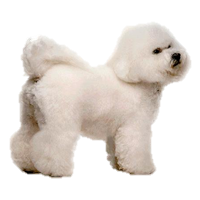
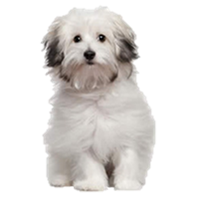

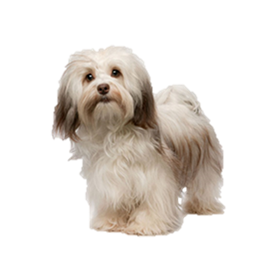
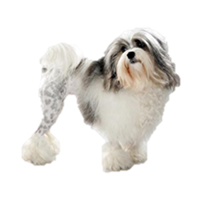

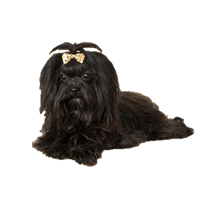
 RSS Feed
RSS Feed